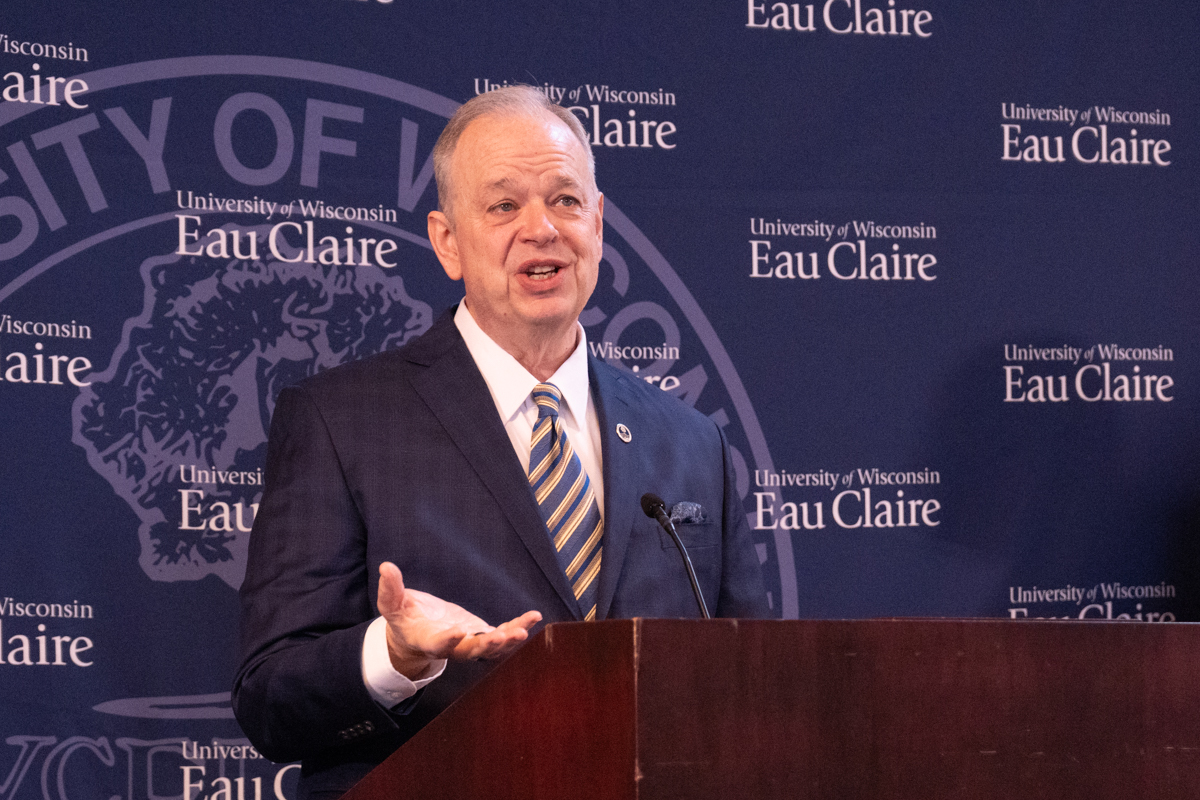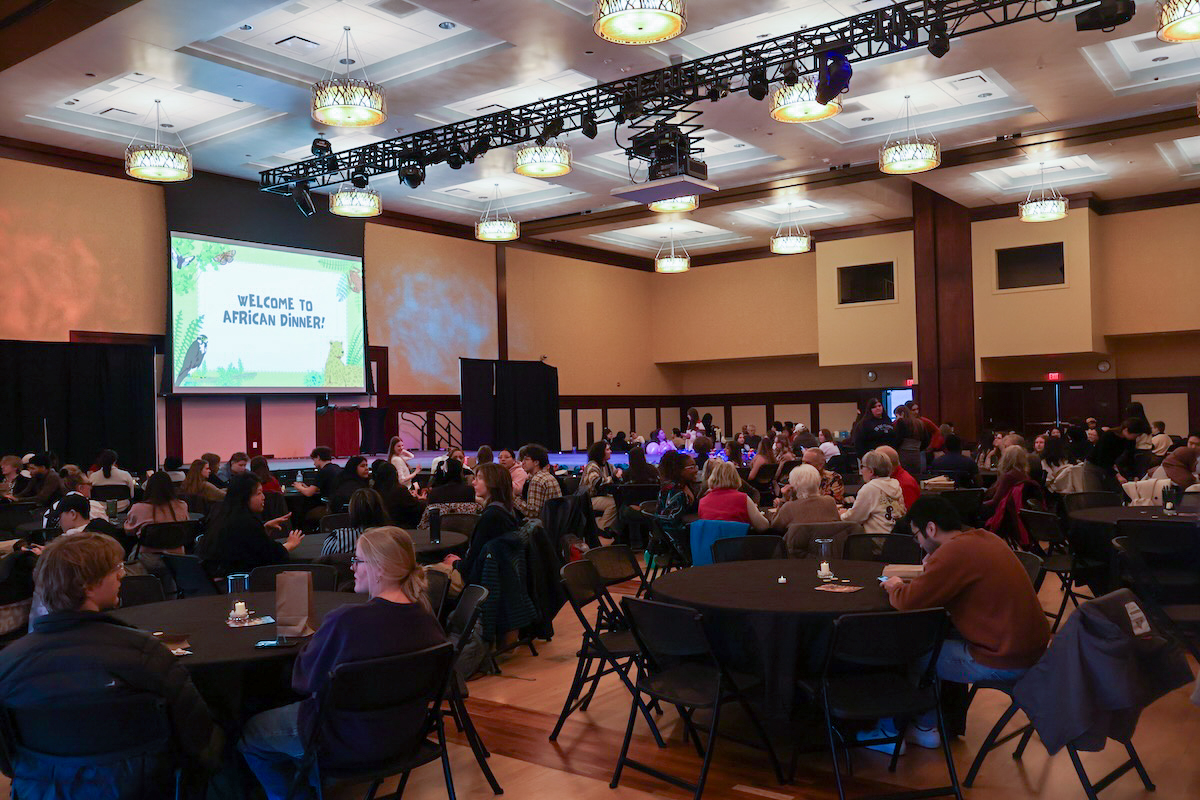Note: Some of the interviews in this article were taken as part of a CJ 222 class instructed by Professor Pechulano Ngwe Ali.
One night in the spring of 2023, while staying at the Sojourner House, a homeless shelter in Eau Claire, a resident asked the front desk worker for their coat. It had been a cold start to spring, and a colder night. It reached 50 degrees inside the building.
When asked, the front desk worker refused the resident’s request. In response, another resident came up. He told the worker to give the other resident their coat. At this time, the worker began to yell at him, prompting his decision to leave.
When he tried to return to the shelter, he was told that he was banned for talking back to an employee.
For days he walked the roads in an attempt to stay warm. Reaching a point of exhaustion, he walked to Putnam Trail on the UW-Eau Claire campus, where a fire pit had recently been burned, leaving only hot coals.
He approached the pit and sat on the stones. With the warmth of the coals and the exhaustion of walking, he blacked out by the pit. He stayed on that stone for five hours, his coat in the hot coals. Waking up to the sensation of his coat catching fire.
This was the beginning of spring 2024 for Seth Champion, an Eau Claire resident who has been unhoused for the last 17 years.
Champion’s experience is not a unique one, as unhoused individuals in the Eau Claire area face hardships in attempts to stay warm in the colder seasons.
Champion said in extreme cold, there is an increased difficulty to gain entrance into overnight shelters like the Sojourner House.
“One of the fundamental problems with the shelter here in the city is [Sojourner] does not go into emergency overflow unless the overnight low is below 16,” Champion said. “There were times last winter where the overnight low was 17. And they go, ‘We’re not doing overflow.’.”
Being unhoused in colder weather conditions, like people experience in Wisconsin, raises other concerns. With temperatures getting as low as -2 degrees fahrenheit in the upcoming weeks, those who can’t make it into a shelter can face serious injury.
“The story you hear a lot is people drinking then falling asleep in the cold and dying,” Champion said. With sudden drops in temperature meeting Eau Claire residents.
Going from lows of 30 degrees Fahrenheit to lows of -2 degrees Fahrenheit, adds uncertainty to what people like Champion can do as weather patterns shift.
But as winter teases with sheets of snow meeting Eau Claire students these past few weeks, the Badger state’s winter may not look the same as Wisconsinites once knew.
According to data presented by the Wisconsin Initiative on Climate Change Impacts (WICCI), average daily winter temperatures have risen as much as 6 degrees in some Wisconsin areas between 1950 and 2018.
The WICCI also states that studies of historical trends and future trends find that Wisconsin will experience a range of possible climate changes and that Wisconsin will likely become a much warmer state over the next few decades as a result of warming global temperatures due to climate change.
As the year comes to an end, the globe has witnessed and experienced major weather extremes at a historic level.
As of Nov. 1, there have been 24 confirmed major weather/climate disaster events in the United States alone according to the National Centers for Environmental Information.
These events range from severe weather to community destroying events such as Hurricane Helene and Milton. These both set records as the strongest hurricane to strike the Big Bend region of Florida and the second-most intense Atlantic hurricane, respectively.
Along with these major weather events, we’ve seen 2024 is on track to be the hottest year on record, surpassing the previous hottest year, 2023, by 32 degrees Fahrenheit. It will also be the first year to surpass 1.5 degrees of warming, according to Copernicus, Europe’s climate change service. This is all a result of rapid global warming and climate change.
Here in Eau Claire, people may not see as many large-scale weather events, but that doesn’t change the perception of climate change and its effects on Wisconsin residents.
According to the 2023 Yale Climate Opinion Map, 69% of Eau Claire adults think global warming is happening and 38% say they have personally experienced the effects of global warming.
Crispin Pierce, professor of public health and environmental studies at UW-Eau Claire and former member of the Sustainability Advisory Committee at the City of Eau Claire, said how Eau Claire residents may experience climate change.
“It’s been very unusual,” Pierce said. “We had a prolonged fall and we had some warm days in the 50s, when it’s normally been in the 30s. The intense rainfall events, the lack of snow during different periods. It’s that kind of day-to-day perception that I think people recognize and realize.”
With record high temperatures and major weather events, citizens in the United States retreat to their homes to shelter from these anomalies or evacuate to safety. But what about the citizens who don’t have the chance?
According to point-in-time data published by Western Dairyland, from January to July 2024, the total homeless population increased to 104 people in the Eau Claire area, but these numbers have seemingly grown since.
Lisa Leazott is the onsite coordinator at the Community Haven House, a warming/cooling shelter in Eau Claire, which serves as a safe space for unhoused people to rest and get access to needs such as food and water.
“That is the number that they give on paper,” Leazott said, regarding the current point-in-time data.
“We know that the numbers have at least doubled since the beginning of the year. But we think it’s more like tripled because there’s a lot of people that are in cars or sleeping on couches. So, the number we think is actually a lot higher than that,” Leazott said.
Homelessness in the United States has increased significantly in recent years, reaching 643,104 people experiencing homelessness in 2023. This makes this the largest unhoused population since 2007, but as Leazott said, numbers on paper aren’t always accurate.
With the growth of homelessness, these populations that are at a larger risk to the effects of extreme weather shift as a result of climate change.
“People unhoused don’t have the same resources that people like me do. In a wildfire event, which is related to climate change, I can go home and have an air filter,” Pierce said. “We’ve had a couple of smoky summers due to California and Canadian wildfires. So if I don’t have a place to go and don’t have an AC system, I’m vulnerable to the changes that happen in the air temperature and the air quality.”
Pierce said air pollution is a large concern, as it can have larger effects on lung health and lead to lung cancer. So being unhoused in those events can be dangerous.
Alongside air quality, there are many other risks at play in regards to climate change that the unhoused population may face. These include events like droughts in hotter seasons and flooding due to excessive rain.
The Eau Claire and Chippewa Rivers are affected heavily by flooding in the rainy seasons.
“It’s just a natural thing, exacerbated by climate change, but we’re not flooding people’s homes or businesses, which is smart planning,” Pierce said.
Owen Park is considered “Flood Storage”, a place where the water won’t affect any homes or businesses.
“That having been said, I ride by every day and I see them along the river putting up tents just for a place to stay overnight. Those are not going to be available as we have these flooding events in the Chippewa River or the Eau Claire River,” Pierce said.
These flooding possibilities are exacerbated by the fact that Wisconsin is likely to become somewhat wetter with a modest increase in tidal precipitation and in the number of intense rainfall events according to the WICCI.
The WICCI stated that with winter experiencing the greatest warming,the world will also likely see an increase in precipitation. And with an increase in precipitation, that causes concern for Eau Claire’s unhoused as well.
Champion said that his main concern with more precipitation is foot health.
“Stepping in a puddle, the whole foot gets wet. No big deal, you go home, take the shoe off. When you’re homeless, If it’s less than 60 out, you’re not going to survive more than five minutes or so,” Champion said.
With these in mind, the unhoused population is at higher risk in the event of weather extremes in the event of climate change. This winter, Champion and others are left to face the elements with limited resources, walking the streets.
“When the shelter didn’t let me in, and it was like what we’re talking about, super f— cold. You can just walk for warmth. But you can only walk for so long, right? Eventually you gotta sleep. So, I’ll figure it out.”
Agbara can be reached at agbarac5401@uwec.edu.









